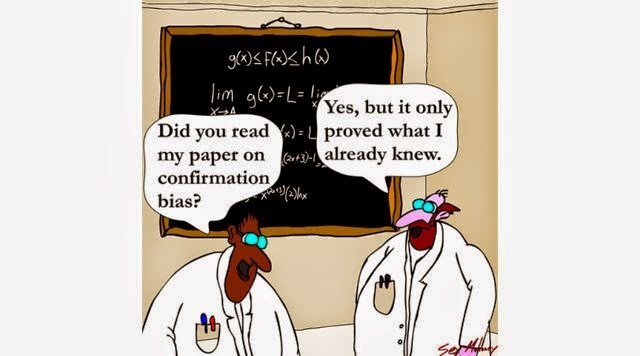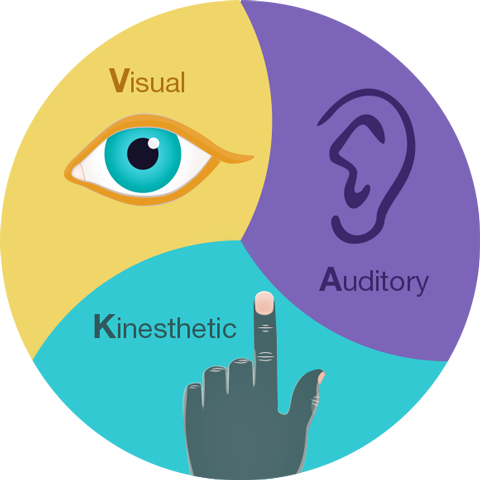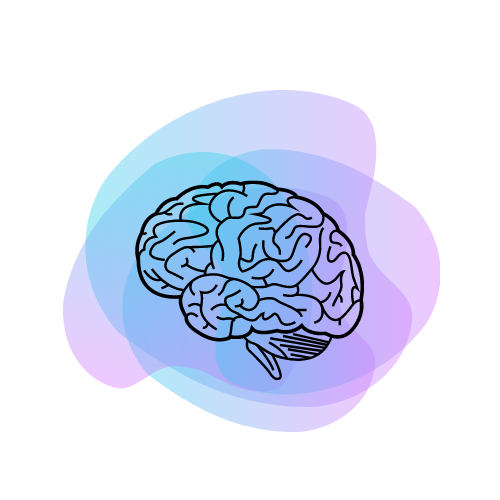Have you noticed the words “brain-based” in popular online quizzes, magazine articles or self-help books? How about that latest “brain training game” that suddenly everyone is obsessed with? It has actually become quite common to come across brain research findings in popular media. Neuroscientific research has received a lot of attention since 1990s–2000s, the notorious glory decade declared as the “Decade of the Brain” in the USA. Even though neuroscience is booming ever since, this realm of research is very diverse and complex, making the accurate transfer of research findings to everyday real-world contexts rather difficult. It is no wonder persistent misunderstandings and misconceptions about the brain are widespread in the public, and even among experts as well! These false notions can stem from different sources, and while we are often able to trace back where some idea was born, it can still take a long time for it to die out, even after a myth has been busted. The problem here is that the information that is available to the scientific community is often not so readily available to the general public. Most people do not read academic journals and follow new scientific developments, so how will recent scientific findings reach them?
This is where science communication comes in handy! In line with this, NeuroPsyence is launching an ongoing series called Neuromyth Busters where we discuss popular myths about the brain. Before we start exploring the world of neuromyths, I thought it might be useful to define some terms and provide a bit of context to this journey. Here you will find out what neuromyths are, where they come from, and how they tend to persist. I will also be talking about the importance of neuromyths in education towards the end of this post. Just as a bit of a teaser, for part 1 of the new series, we will be exploring the very popular belief that humans use only 10% of their brains, so keep an eye out for the first Neuromyth Busters post in a couple of days!
What are neuromyths?
A neuromyth is “a misconception generated by a misunderstanding, a misreading, or a misquoting of facts scientifically established (by brain research) to make a case for use of brain research in education and other contexts.” (Organization for Economic Co-operation and Development (OECD), 2002). Simply put, “neuro” or “neural” refers to the nervous system or the brain, and “myth” refers to a false belief. Within educational neuroscience (neuroeducation, or mind, brain, education science), misunderstandings about the function of the brain and its role in learning and teaching practices are also termed neuromyths.
Where do neuromyths come from?
Neuromyths generally are not spread by malicious intent, but rather miscommunication, misinterpretation of results from a scientific study, oversimplification of a study’s results by popular media, substandard media coverage such as the coverage of irrelevant information, sensationalism, and the omission of relevant information. Some neuromyths stem from scientific hypotheses that have been held true for a long time, but are subsequently abandoned by the scientific community once new evidence emerges. It seems obvious that perpetuating false beliefs should not be standard practice, so how do neuromyths persist?
There are many hypotheses in science which are wrong. That’s perfectly all right; they’re the aperture to finding out what’s right. Science is a self-correcting process. To be accepted, new ideas must survive the most rigorous standards of evidence and scrutiny.
Carl Sagan, Cosmos,
Fourth Episode
How do neuromyths persist?
The human brain has long been a source of fascination and mystery. With many recent advances in neuroscience, along with the ever-growing allure of the brain and mind sciences, neurophilia – the intense love and fascination with all things neuro, is thriving, and findings from brain research have become a staple in popular media. Neurophilia in the general public in itself is not a bad thing, but media has a way of marketing information in a way that grabs attention and makes money. For example, news articles attempt to (over)simplify information from research papers, and in that process will either omit important information or use clever wording to twist the context of the findings (perhaps unintentionally). The reason why we believe news articles, in part, is because they tend to bedazzle the story by including a few factually true or widely accepted premises, that are not actually relevant to the point, thus making it seem like their content is credible information. For example, the sentence “specific mental processes take place in the brain” is a vague correct statement that is open to interpretation depending on what follows next (Pasquinelli, 2012). The problem here is that people without relevant background knowledge and training may interpret these statements in a different way, and with limited access to original published peer-reviewed literature or less understanding of the publication process, requirements, and the topic itself, they may become more resistant to accepting information that disproves their biases and already formed opinions and beliefs (Grotzer, 2011). So myths can persist simply because we behold them.
Another reason why neuromyths persist, is because they’re believable. As mentioned, a lot of myths come from legitimate scientific discoveries that are later found to be inaccurate, meaning that at some point they were backed up by some data, thus believable. We also tend to believe the myths that have a soothing effect on us (Pasquinelli, 2012). If you did not have resources or access to quality educational materials for children, but did have a music player and a classical music CD, it would be fairly comforting to read that listening to classical music may help develop or improve your child’s intelligence even though this is not true, and has been disproven many times (Pasquinelli, 2012). It may be comforting to read that if you have developed specific artistic skills, but were not great at math, one of your brain’s hemispheres is dominant over the other, even though this is a (very) sensationalised statement.
Moreover, the human mind ironically favours confirmation bias – “the tendency to seek or interpret fresh information in a way that confirms previous beliefs” (Pasquinelli, 2012). Confirmation bias comforts us in our own opinions, and makes us say “I KNEW IT!!“. Makes sense right? If something is meaningful to you it will hold your attention and make you contemplate information more. Imagine if you were a new mother reading about children’s brain development, or an athlete reading about oxidative stress, or someone who loves Brain Gym reading about other revolutionary brain developing exercises – this would be really important to you, you would continue to seek out more and more information about the things that you already know and/or love! This however might also mean that false beliefs will just keep spreading. Our personal biases and robust thinking i.e. believing what we want to believe, are what prevent us from critically evaluating new information, and changing our opinions.

So how do false beliefs then circulate among people? The answer is social media, news articles, movies, other popular media, forums, “brain games”, the educational setting and so on. Studies have shown that merely putting a cover image with a brain fMRI scan, or including the words brain, brain-based, neuro-, in titles and fake educational products, increases the interest of consumers and strengthens their belief in the value of the fake product (Lindell & Kidd, 2013). Various studies have also shown that neuromyths are widespread and persistent among the general public, among educators of all levels, and even among individuals who have formal tertiary and graduate training in neuroscience (Dekker et al., 2012; Macdonald et al, 2017; Simmonds, 2014). It seems as though anyone can fall pray to a juicy fable, so it is no wonder neuromyths persist worldwide.
Neuromyths in Education
Neuromyths have notably been investigated in relation to the educational setting, and many studies have found that many teachers of all levels, from trainees and recent graduates to award winning educators, believe in popular neuromyths, and that this trend is fairly consistent across countries. For example, belief in the popular neuromyth which states that education outcomes can be enhanced if students are presented with information in their preferred learning style (visual, auditory, or kinaesthetic- VAK method), seems to be a common one among teachers in the UK and Netherlands (Dekker et al., 2012), Argentina, Peru, and Chile (Gleichgerrcht et al., 2015), Turkey (Dündar & Gündüz, 2016), Greece (Papadatou-Pastou et al., 2017), Spain (Ferrero et al., 2016), China (Pei et al., 2015), Australia (Hughes et al., 2020), and many other countries. Similar results have been found in relation to the belief that humans use only 10% of their brains, and that we each have a dominant brain hemisphere. Of course there are many differences across countries as well, especially in relation to cultural perceptions. For example, in one study teachers in China reported they believed more strongly in an inherently predetermined impact of genetics on intelligence, as opposed to brain plasticity fixed genetic influence on intelligence, and less in brain plasticity as teachers from other countries (Pei et al., 2015).

Moreover, while some studies have found that primary and secondary school teachers with higher teaching qualifications are more likely to reject neuromyths (e.g. Hughes et al., 2020), there are others which have found that even individuals with formal neuroscience training believe in neuromyths, albeit significantly less than educators and laypeople (Macdonald et al. 2017). If neuromyths permeate the education system, then what are the consequences of neuromyth belief? There are two sides to the coin. Some researchers suggest that neuromyth belief leads to more wasteful and less productive practices, and less effective teaching (e.g. Howard-Jones, 2014), while others suggest that unless the educators are teaching neuroscience courses, their belief in neuromyths does not make them worse teachers (Horvath et al., 2018).
As mentioned, some authors suggest that neuromyth belief among teachers is very problematic because it may lead to wasted resources and poor teaching practices. For example, teachers may spend time and resources developing activities for students that are based on false science and have no real benefits to learning (Howard-Jones, 2014), or schools may invest in commercial programs that have no scientific basis (van Dijk & Lane, 2020), such as programs centred around the VAK method. Furthermore, if teachers believe in neurodevelopmental neuromyths, such as that dyslexia is characterised only by reversing letters backwards while reading and writing (a neuromyth originating in the early visual theories of dyslexia from the 1920s), students who are dyslexic might not have timely access to assessment, diagnosis, and support (Macdonald et al., 2017).
On the other hand, some studies have found that primary school teachers regularly incorporate body movements and exercises in their curriculum because they believe it increases literacy. Evidence suggests that exercise is not related to reading outcomes (e.g. Spaulding et al., 2010), but is incorporating physical activity in primary school curriculums such a bad teaching practice? Absolutely not! While it probably will not help children read better, physical activity has profound effects on human wellbeing, including positive effects on child development. So teachers who believe in the aforementioned neuromyth are probably not harming their students. This is one example why some authors argue that belief in neuromyths is irrelevant to whether teachers are good educators in general.
While we have to keep in mind that all studies differ methodologically, I would like to think that as the field of neuroscience grows, public interest, engagement and exposure to latest information will continue to grow. And while I personally want to bring neuroscience closer to the public, I do agree with Dr Horvath that you shouldn’t feel bad or embarrassed if you believe in a neuromyth because that is what you were taught at one point or another. It should however be fun to learn about these myths and how wonderful our brains really are. Our new series will explore individual popular neuromyths, their origin, their persistence, and what is the latest consensus on the matter, starting with the very famously debunked neuromyth that we use only 10% of our brains.
Some authors suggest that primary (and even secondary) school teachers should have some formal training in neuroscience as to avoid perpetuating neuromyths and including them in their practice. What do you think?

Know a myth that needs busting?
If you know a neuromyth that we haven’t covered yet, or if you simply want to fact check your neuroscience knowledge, let us know via our socials, or leave us a message below.
Let’s hang out
Get in touch
Article References
Dekker, S., Lee, N. C., Howard-Jones, P., & Jolles, J. (2012). Neuromyths in education: Prevalence and predictors of misconceptions among teachers. Frontiers in Psychology, 3(429), 1–8. doi:10.3389/fpsyg.2012.00429
Dündar, S., & Gündüz, N. (2016). Misconceptions regarding the brain: The neuromyths of preservice teachers. Mind, Brain, and Education, 10(4), 212–232. doi:10.1111/mbe.2016.10.issue-4
Ferrero, M., Garaizar, P., & Vadillo, M. A. (2016). Neuromyths in education: Prevalence among Spanish teachers and an exploration of cross-cultural variation. Frontiers in Human Neuroscience, 10. doi:10.3389/fnhum.2016.00496
Gleichgerrcht, E., Luttges, B. L., Salvarezza, F., & Campos, A. L. (2015). Educational neuromyths among teachers in Latin America. Mind, Brain, and Education, 9, 170–178. doi:10.1111/mbe.2015.9.issue-3
Grotzer, T. A. (2011). Public understanding of cognitive neuroscience research findings: Trying to peer beyond enchanted glass. Mind, Brain, and Education, 5, 108–114. doi:10.1111/mbe.2011.5.issue-3
Horvath, J., Donoghue, G., Horton, A., Lodge, J., & Hattie, J. (2018). On the Irrelevance of Neuromyths to Teacher Effectiveness: Comparing Neuro-Literacy Levels Amongst Award-Winning and Non-award Winning Teachers. Frontiers In Psychology, 9. https://doi.org/10.3389/fpsyg.2018.01666
Howard-Jones, P. A. (2014). Evolutionary perspectives on mind, brain, and education. Mind, Brain, and Education, 8(1), 21–33. doi:10.1111/mbe.2014.8.issue-1
Hughes, B., Sullivan, K., & Gilmore, L. (2020). Why do teachers believe educational neuromyths?. Trends In Neuroscience And Education, 21, 100145. https://doi.org/10.1016/j.tine.2020.100145
Lindell, A. K., & Kidd, E. (2013). Consumers favor “Right Brain” training: The dangerous lure of neuromarketing. Mind, Brain, and Education, 7, 35–39. doi:10.1111/mbe.2013.7.issue-1
Macdonald, K., Germine, L., Anderson, A., Christodoulou, J., & McGrath, L. (2017). Dispelling the Myth: Training in Education or Neuroscience Decreases but Does Not Eliminate Beliefs in Neuromyths. Frontiers In Psychology, 8. https://doi.org/10.3389/fpsyg.2017.01314
Organisation for Economic Co-operation and Development (OECD). (2002). Understanding the brain: Towards a new learning science. Paris, France
Papadatou-Pastou, M., Haliou, E., & Vlachos, F. (2017). Brain knowledge and the prevalence of neuromyths among prospective teachers in Greece. Frontiers in Psychology, 8. doi:10.3389/fpsyg.2017.00804
Pasquinelli, E. (2012). Neuromyths: Why Do They Exist and Persist?. Mind, Brain, And Education, 6(2), 89-96. https://doi.org/10.1111/j.1751-228x.2012.01141.x
Pei, X., Howard-Jones, P. A., Zhang, S., Liu, X., & Jin, Y. (2015). Teachers’ understanding about the brain in east China. Procedia-Social and Behavioral Sciences, 174, 3681–3688. doi:10.1016/j.sbspro.2015.01.1091
Simmonds, A. (2014). How Neuroscience is Affecting Education: Report of Teacher and Parent Surveys. Wellcome Trust.
Spaulding, L. S., Mostert, M. P., & Beam, A. P. (2010). Is Brain Gym® an effective educational intervention?. Exceptionality, 18(1), 18–30. doi:10.1080/09362830903462508
van Dijk, W., & Lane, H. (2018). The brain and the US education system: Perpetuation of neuromyths. Exceptionality, 28(1), 16-29. https://doi.org/10.1080/09362835.2018.1480954
Latest From Instagram
Latest from the NeuroBlog
How can Neurofilament light concentrations help in Diagnosis?
Overview In May 2022, I attended a conference in Syndey, Australia. The conference was targeted mainly for psychiatrists and neuropsychiatrists. I was able to attend this lovely conference through my company called Monarch Mental Health Group. On the first day, the conference kicked off by an invited keynote speaker. This speaker was a psychiatrist, and…
Execessive Neural Noise in Developmental Dyslexia?
Overview Developmental dyslexia (reading disabilities/disorders, or decoding-based reading disorder) is a neurodevelopmental disorder with multiple potential underlying genetic, neural, and cognitive factors. Past models have not been very successful at integrating key neural and behavioural features of dyslexia with common neural processes, until Hancock et al. (2017) proposed their dyslexia model. Dyslexia risk genes indicate…
Neurology and Mental Health: The Impact of COVID-19
Overview Coronavirus disease (COVID-19) is an infectious disease caused by the SARS-CoV-2 virus. Most people infected with the virus will experience mild to moderate respiratory illness and recover without requiring special treatment, though some will become seriously ill and require medical attention. Along with growing evidence of neurological symptoms, mental health during the pandemic is…













1 thought on “Neuromyths: What are they and what can we do about them?”